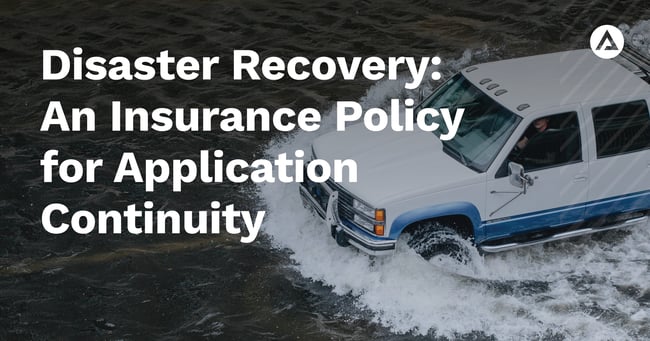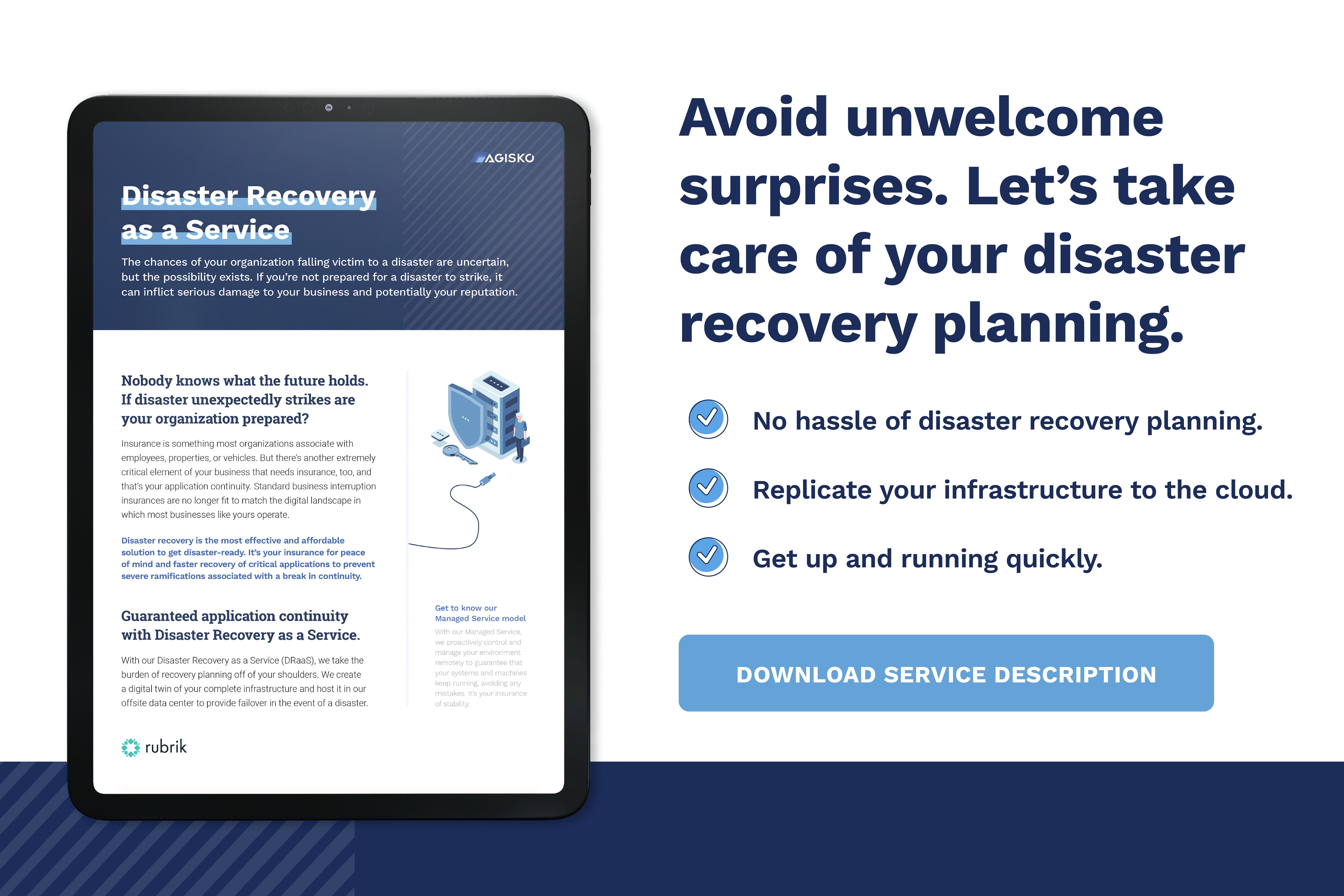As with all aspects of life, running a business is full of surprises, unfortunately not always pleasant ones. That’s when having a good insurance policy makes all the difference.
“Insurance” is something most organizations associate with their employees, properties, or vehicles. But there’s another critical area of your business that needs insurance, too: your application continuity. If disaster unexpectedly strikes, will you be prepared?

Service and application downtime can be costly and stressful. Outages mean you can’t access the data and applications your organization depends on. This can spell disaster on many levels – lost sales, frustrated customers, and damage to your brand reputation.
You require a solid disaster recovery plan that includes details and actions that allow you to recover quickly and effectively.
While most organizations appreciate the value of having a robust and reliable disaster recovery solution in place, many aren’t able to implement one due to financial and resource limitations.
Understanding the Problem
The challenges for numerous organizations are varied and complex.
1. Backup data center infrastructure is expensive
First, secondary physical data center infrastructure is expensive. Unlike big corporations with deep pockets, many IT budgets simply won’t stretch that far. Moreover, it’s difficult to justify the capital outlay for hardware that needs to be maintained and renewed, although it’s only ever used in the case of an emergency.
2. Data replication and sprawl
Any organization's data volumes grow year-on-year, and you need to look after it. Like many, you might be using a mix of disparate backup infrastructure (tape, on-premises, and cloud-based). This can quickly lead to data replication and sprawl, which introduce management complexity, inefficiency, and increased cost.
3. A backup plan is NOT a disaster recovery plan
It’s also important to remember that simply having a backup plan doesn’t mean you have a disaster recovery plan. Investing in technology, software, and licenses that “tick the disaster recovery box” isn’t much good if you don’t correctly configure them, regularly test them, and have a formal plan on how to use them should disaster unexpectedly strike.
4. Finding a vendor you can trust
Of course, outsourcing disaster recovery to a third-party vendor is an alternative. But you need to know your critical applications and data are in a safe pair of hands. How do you find a vendor you can trust?
As we touched on earlier, it takes time to create a comprehensive disaster recovery plan that considers the nature of your company’s operations, infrastructure, applications, and the kind of data you transmit and store. It requires specialist skills and knowledge. Unfortunately, time often goes to running day-to-day operations or needed expertise isn’t always directly available.
Well-trained and experienced personnel, effectively designed processes, and knowledge of the right technology are typically the critical differences in any organization’s ability to demonstrate solid operational resilience and weather any storm.
The good news is that with the evolution of cloud technology, there’s an effective and affordable way to get disaster-ready. Disaster Recovery-as-a-Service (DRaaS) brings you the people, processes, and technology you require when disaster strikes.
Disaster Recovery as a Service: a Foundation for Operational Resilience
DRaaS gives you the peace of mind that you’ll be able to swiftly recover data and applications and keep your business operating in the unwelcome event of system or hardware failures, power or network outages, human error, or even malicious cyberattacks.
With DRaaS, physical or virtual servers are replicated and hosted by a third party to provide failover should your business operations be unexpectedly disrupted. The DRaaS provider makes its own infrastructure available to serve as a temporary stop-gap.
Keep Calm and Let Us Configure Your Disaster Recovery
Agisko takes the burden of disaster recovery planning off your shoulders. Through our DRaaS solution, we assume end-to-end responsibility for carefully planning and regularly testing your infrastructure in an isolated environment to pre-empt faults and failures and ensure your business is back up and running quickly in the event of a catastrophe.

We create a digital twin of your complete infrastructure and host it in our offsite data center to provide failover in the event of a disaster. Our solution replicates your entire backup environment, including server hardware, operating system licenses, backup software licenses, tape archives, and offsite vaults.
Get Disaster-Ready Now
Reliable backups are integral to SMBs’ continuity and success. Without them, data losses could be irreversible and have devastating consequences. It doesn’t have to be that way for your business.
> Request a free consultation.




